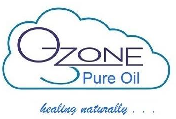History of Ozone.
In 1785 Van Mauran reported about ozone’s distinctive odour. But the gas was not discovered until 1840 by a German chemist Christian Frederick Schonbein at the University of Switzerland. He named the gas ozone after the Greek word for “smell”. In 1860, the French chemist Soret concluded that ozone was made up of three atoms of oxygen. How-ever it was the English chemist Andrews who first demonstrated ozone’s oxidating and disinfecting properties in a laboratory.
In 1856, ozone was first used to disinfect operating rooms and in 1860 the first water treatment plant to use ozone to purify municipal water supplies was built in Monaco. After a sever outbreak of cholera in Hamburg killed thirty thousand people the first waterworks to use ozone in Germany was constructed by the chemist and inventor Werner von Siemens in Wiesbaden in 1901, followed by one in the Westphalian city of Paderorn a year later.
In the last one hundred and fifteen years many advances have been made in ozone technologies. Sophisticated ozone generators and related technologies have been developed that incorporate ozone in a wide range of industrial, home use and scientific applications.
Current uses around the world
Today over 2,500 municipalities around the world use ozone to purify their drinking supplies, including Los Angeles, Paris, Montreal, Moscow, Kiev, Singapore, Brussels, Florence, Turin, Marseille, Manchester and Amsterdam. In an age of increasing pollution of drinking water supplies, ozone is regarded as an inexpensive, safe and effective purification alternative to chlorine and other substances. Unlike chlorine, ozone can clean up a lake or stream without killing the resident animal life or leaving potentially harmful chemical residues in the ecosystem.
In both America and Australia / NZ it is authorised to be used as a food decontaminate and is used by the bottling industry to disinfect the insides of soda and beer bottles. The ozone quickly disappears as it decomposes to oxygen. Brewers use ozone to remove any residual bad taste and odour from the water in beer production. Ozone is also utilised by the pharmaceutical industry as a disinfectant, and in the manufacture of electrical components to oxidise surface impurities. Ozone concentrations of one to three parts per million are used to inhibit the growth of moulds and bacteria in stored food like eggs, meat, vegetables and fruits.
Ozone is also authorised to be used for swimming pool and spa hygiene. Even our own 2000 Olympic swimming pool in Homebush, Sydney is ranked one of the fifth fastest pools in the world is ozonated. Olympic athletes prefer the softer less chlorinated water as it’s gentler on the eyes and provides less resistance in the water. It is interesting to note that chlorine is a by-product of aluminium and it is thought that when swimming for one hour in chlorinated water our bodies absorb one litre of water that is potentially hazardous to our health.
The manufacture of ozone producing gadgets for home and car use has flourished over the last fifteen years as cities have become increasingly polluted. It is possible to use ozone in the home to purify water, clean fruit and vegetables of fungi, pesticides and mould and to deodorise clothes, shoes and rooms. You can travel with an ozone purifier in your car’s cigarette lighter and alleviate symptoms of toxic air. Road rage is a condition often aggravated by low oxygen levels in the air we breathe. In oxygen deficient environments our cells send a message to our brain that we are dying and our natural response is often aggression toward others as a primitive means of survival.
- Oxygen Healing Therapies by Nathaniel Altman 1995
- The Story of Ozone by Dr Saul Pressman 1999


